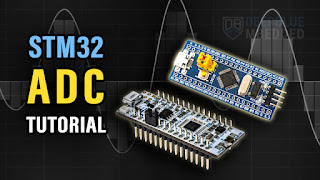What is the difference between HAL and LL drivers in STM32?
The HAL (Hardware Abstraction Layer) and LL (Low Layer) drivers in STM32 are both provided by STMicroelectronics, but they serve different levels of abstraction and are suited to different use cases.
Here’s a breakdown of their differences:
HAL vs. LL: Key Differences
| Feature | HAL (Hardware Abstraction Layer) | LL (Low Layer) |
|---|---|---|
| Abstraction Level | High-level abstraction | Low-level, close to register access |
| Ease of Use | Easier for beginners and rapid development | Requires deeper understanding of hardware |
| Code Size | Larger (more layers, more function calls) | Smaller and more efficient |
| Performance | Slower due to overhead | Faster and closer to bare-metal speed |
| Portability | More portable across STM32 families | Less portable, tied closely to registers |
| Flexibility | Limited to what's implemented in HAL functions | More control and customization |
| Interrupt Handling | Abstracted and simplified | Must be configured manually |
| Generated by CubeMX | Yes (fully supported) | Yes (partial support) |
When to Use HAL
-
You're building general-purpose applications
-
You want to prototype quickly
-
You're less experienced with STM32 hardware
-
Code portability and readability are more important than performance
When to Use LL
-
You need higher performance and tight control
-
You're working on time-critical applications (e.g., motor control, real-time processing)
-
You want minimal code size
-
You're familiar with STM32 register-level programming
Can You Mix HAL and LL?
Yes! STM32Cube allows mixing HAL and LL drivers in the same project. This is common when:
-
Most of your code uses HAL for simplicity
-
Specific performance-critical parts use LL (e.g., high-speed ADC, DMA, or GPIO toggling)
Example
Toggle GPIO Pin
-
HAL:
-
LL:
Summary
| Need | Use |
|---|---|
| Simplicity & portability | HAL |
| Speed & efficiency | LL |
| Fine-grained hardware control | LL |
| Mix of ease and control | HAL + LL (hybrid) |




评论
发表评论